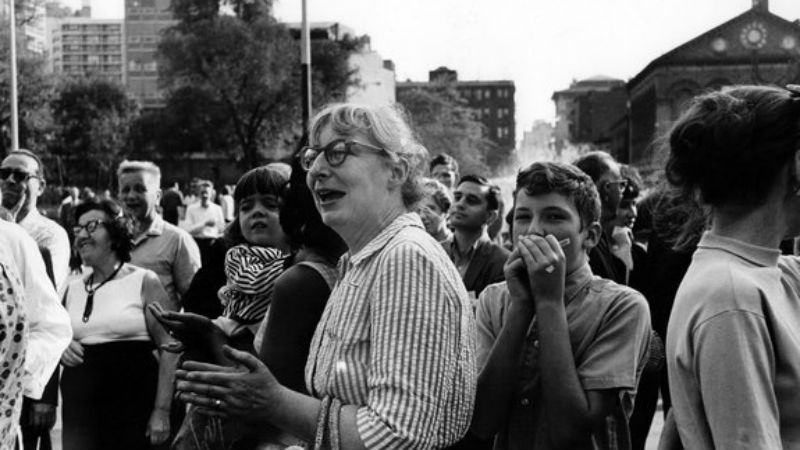When you think of New York what is it that comes first: buildings or people? Already in the 1930s, New York was one of the greatest cities in the world, and it was breathing modernism. Its skyscrapers, such as the Chrysler Building (completed in 1930) and the Empire State Building (completed in 1931), represented additional stories to the city. But prioritising buildings ahead of people when planning a city is a risky notion. That’s because people – not buildings – make cities.
Journalist Jane Jacobs was the first voice in the US to recognise that if you make massive transformations, getting people away from the streets, you are turning a living city into a dead one. Cities are unpredictable. Neighbours need lots of connections and public spaces to interact. Jacobs knew it and she spoke up!
The story of Jane Jacobs would perhaps be forgotten if it wasn’t for her fierce opposition to the broker Robert Moses. Citizen Jane: Battle for The City is essentially a one woman’s struggle against the man who wanted to homogenise New York. Moses was behind architectonic projects to clean the slums, build expressways that choked the city and erect low-income buildings that isolated communities. In 1960 Jane Jacobs’s book “The Death and Life of Great American Cities” sent shockwaves through the architecture and planning worlds because it exposed the dangers of such reconfigurations.

But Jacobs was not simply a writer. She was also an activist. Probably inspired by the Civil Rights Movement, Jacobs headed a huge popular insurrection against politicians’ plans to revamp New York. She was no longer on her own. She sued the City Hall. And she won.
The documentary shows how New York has been transformed since. Sadly, what she fought for is now being destroyed by gentrification of districts like Brooklyn. New York might not have many hills, but it is hard to walk in the city. The sidewalks are uneven, there are major works everywhere, and very little privacy. Even the luxurious swimming pools visible from Chelsea elevated passageway reveal that it is quite difficult to suppress invasion. Rearranging spaces means rearranging social relations.
Citizen Jane is a didactic film, based on papers and pictures. It is a very conventional documentary, and sometimes it gets a little dull. It collects a series of testimonies, but all of them are in favour of her visionary ideas, neatly manipulating the film viewers. The soundtrack contributes to a very disturbing feeling: Jacobs never rested.
A high moment in the film is to listen to the activist James Baldwin (who is also in the outstanding doc I Am Not Your Negro (Raoul Peck, 2017), explaining how such transformations led to removal of the “negroes” from the city.
Citizen Jane: Battle for The City is out on Friday, May 5th.








